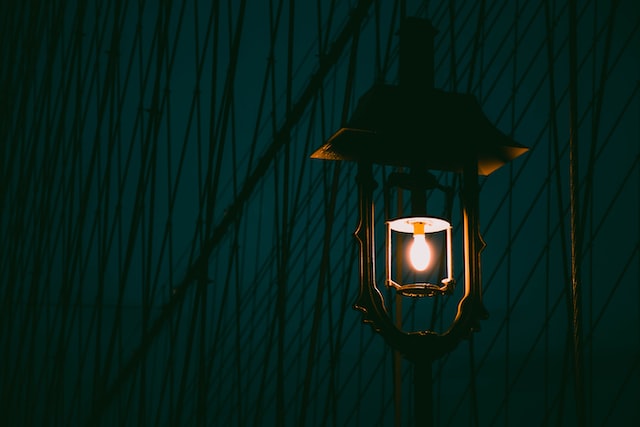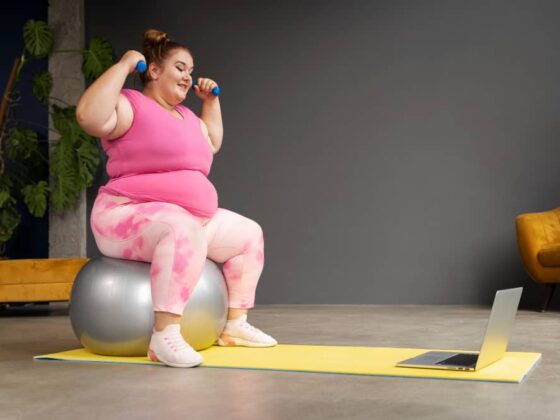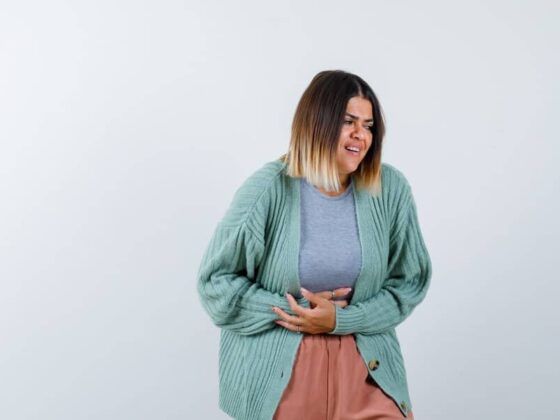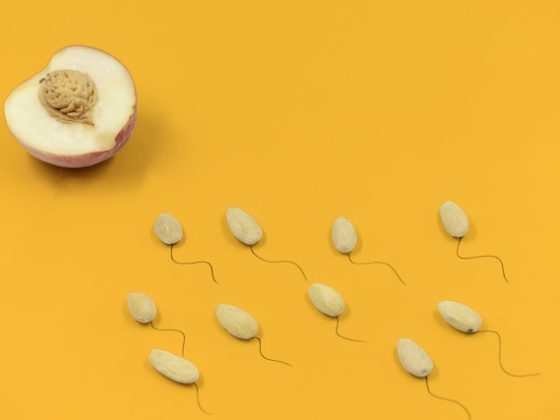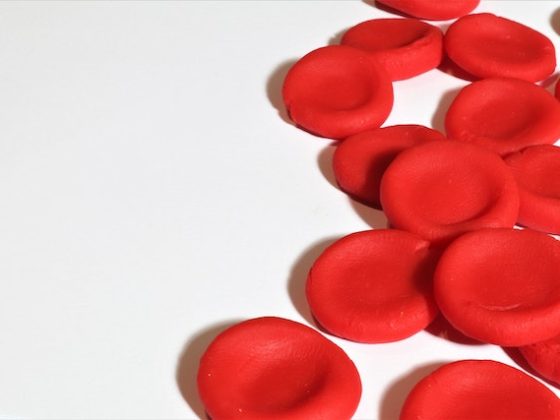Hey there! This post may contain affiliate links. As an Amazon Associate, I earn a teensy commission from qualifying purchases when you buy through these links (at no additional cost to you). For more info, please check the full disclaimer.
Since Halloween and Christmas are just around the corner, many of you must be planning to light up your outdoors. However, a recent study in 2020 confirmed that postmenopausal women living in brightly lit neighborhoods with nightlights are prone to breast cancer risk.
Shocking, right?
Whether you live in the countryside or cities, nightlights are a core necessity, especially if you need to find your way in the dark to get up to pee or take a sip of water.
You might have nightlights indoors or outdoors. In homes with elderly, these lights are necessary for nighttime roaming. While outdoors, they keep the residential areas lit and illuminated.
However, it turns out that if you’re 40+ years and exposed to lights at night, your risk of getting breast cancer is 10% higher than others.
Let’s take a look at how and why outdoor nightlights cause breast cancer in postmenopausal women.
Research Details
Purpose:
The main purpose of this study was to figure out if there’s any link between exposure to outdoor nightlights and breast cancer rates in postmenopausal women.
Researchers:
The study was conducted by Rena R. Jones, Qian Xiao, Patrick Breheny, Peter James, Jared A. Fisher, Peng Jia, Mary H. Ward, Dong Zhang and Yikyung Park, of the National Cancer Institute. You can read more about this June 2020 research in the International Journal of Cancer.
Methods:
Scientists used images and data from a satellite from a previous study in 1996 to follow-up on 186,981 postmenopausal women. Out of these, 12,318 had breast cancer.
They analyzed the connection between the use of nightlights in the residential areas of the subjects and how it affected the rates of breast cancer in these regions.
Results:
The researchers found that if you’re postmenopausal and vulnerable to artificial nightlights in your residential area, then your risk of developing breast cancer is 10% higher than those who’re less than 40 years and live in particularly dimly lit regions.
Summary:
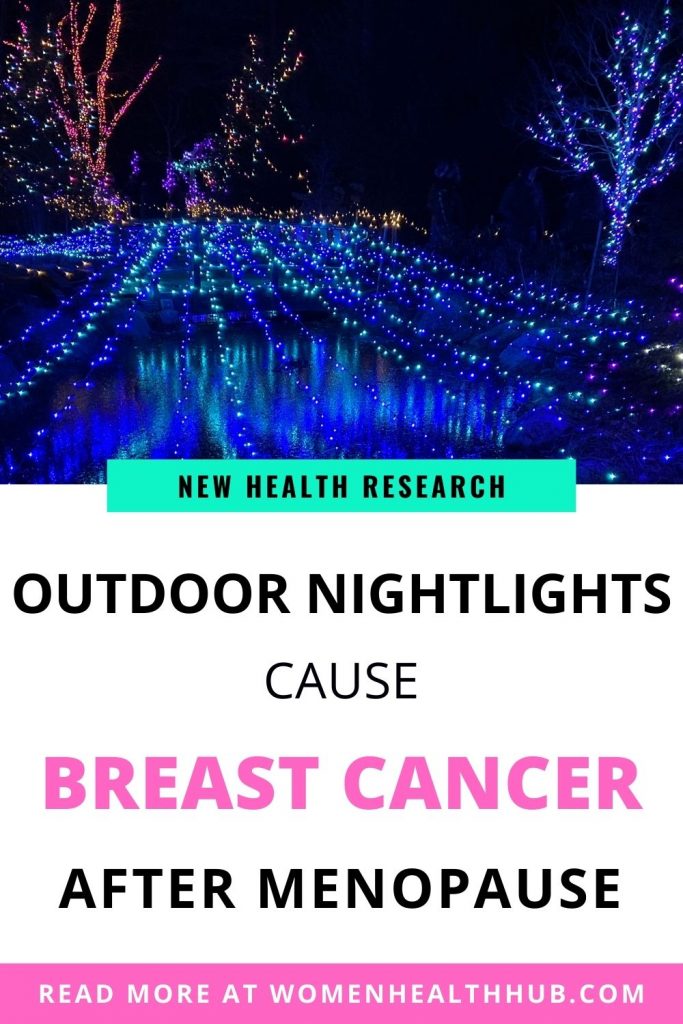
Here are the findings summed up:
What is Breast Cancer?
Breast cancers are one of the most common kinds of cancers around the world. Every year, almost 40,000 women die of breast cancer in the US.
It’s caused by an unusual and mutated cell growth in your boobs, underarms, or deep inside the chest.
You may be diagnosed with any of the 5 stages of breast cancer. It spreads fast and is quite harmful if it reaches the adjacent organs.
Additionally, this disease sees no age. Whether you’re under or above 40 years, your lifestyle choices and surroundings will put you at risk of chest cancer.
That’s why you must prioritize timely diagnosis, treatment, and prevention of breast cancer from an early age.
Symptoms of Breast Cancer
Recognizing the early signs of breast cancer is super important. Otherwise, it might progress and get worse with time.
These are some symptoms of breast cancer you should know about:
If you notice any of these symptoms, book an appointment with your doctor immediately. They’ll likely check for signs of breast cancer and prescribe a mammogram if necessary.
I’d also recommend doing your breast self-exam every month. Make it a part of your routine if you’re postmenopausal, live in an area with many nightlights, or have family history of breast cancers.
Grab my free printable complete step-by-step guide, if you want to learn how to do your breast self-check at home.
Sleep Problems in Postmenopausal Women
Menopause has a significant effect on your sleep quality. You’ll spend most of your nights tossing and turning in bed. In fact, one of the most common signs of menopause is sleeplessness.
During menopause, your body undergoes many hormonal changes.
Low levels of estrogen (female hormone) and melatonin (sleep hormone) manifest as various symptoms. You might experience a disrupted circadian rhythm (sleep-wake cycle), hot flashes, frequent need to pee, and night sweats.
With these changes, your body doesn’t get enough rest & stress increases. This is further linked to higher breast cancer risk as well.
What Are Nightlights & Why Do You Need Them?
While living in cities, you’ll come across LED nightlights, both indoors and outdoors. Urban neighborhoods are filled with bright white lights on signboards, banners, and streets to properly illuminate shops and residential areas.
In short, nightlights have gradually become an integral part of our lifestyle. People buy all kinds of bulbs and lamps to light up their surroundings and prevent accidents in the dark.
Nightlights are of different types and available in a variety of colors:
LED lights also emit high temperatures. If you’re menopausal, you’re already experiencing hot flashes and night sweats which contribute to sleeplessness.
To top it off, if you choose LED nightlights, your room will be hot as a furnace. The heat will disrupt the melatonin production and you’ll stay awake for most part of the night. Definitely not ideal for a good rest!
How Does Nightlight Raise the Risk of Breast Cancer?

Nightlights delay the release of the sleep hormone called melatonin. As a result, you’d stay up awake for most part of the night, unable to snooze.
Now this is where the connection between nightlight & breast cancer comes.
Research shows that low levels of melatonin in postmenopausal women increase the production of estrogen and induce stress. Both factors contribute to the high risk of breast cancer incidence.
Surprisingly, this isn’t a new concept.
In short, outdoor nightlights are harmful to postmenopausal women and can increase the danger of developing breast cancer.
So What Can You Do Instead?
As you can’t ditch nightlights entirely, here are some best alternative tips to avoid the risk of breast cancer if you’re postmenopausal.
Dim color lights as opposed to bright white, are better for menopausal women who struggle with a good night’s rest.
According to sleep expert Dr. Michael Gradner, “The reason why the reddish, yellowish, orangish light is better is because the light that your eyes use to tell daytime versus nighttime is blueish-greenish light. But in reddish-orange light, you don’t have those frequencies, so it won’t give as much of a daytime signal.”
These are an excellent choice, particularly for outdoors and streets with many elderly residents.They’re programmed to dim automatically after sometime. Thus, no stray rays would reach into your bedroom and you’ll stay safe from breast cancer risk.
I’d also advise you to not go out at night unnecessarily if your area has bright lights for night time. Get most of your stuff done during the day.
Avoid watching TV or using electronic devices before bedtime. They produce blue light which contributes to low melatonin levels and keeps you awake for hours.
I hope you’ve learned loads about how nightlights can contribute to breast cancer risk in menopausal women.
Do you have outdoor or indoor nightlights? Which color do you use? Plus, how do you plan to reduce your risk of breast cancer?
Let me know in the comments below!
References:
- https://www.dailymail.co.uk/sciencetech/article-8383497/Artifice-light-night-linked-10-increased-risk-breast-cancer.html
- https://www.hsph.harvard.edu/news/press-releases/outdoor-light-night-breast-cancer/
